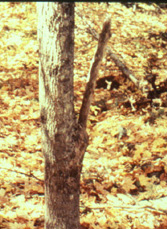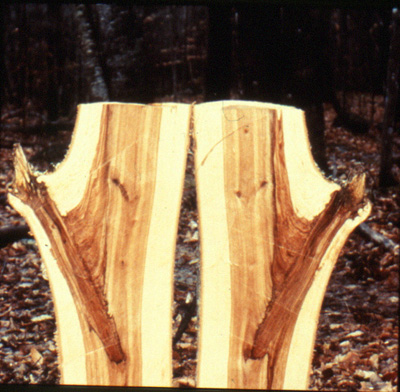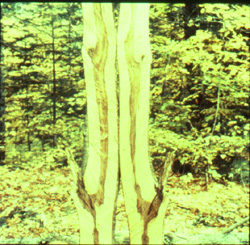
| Home |
| Tutorial |
| Photo Gallery |
| List of Defects |
| Links |
| Bark Distortion |
| Bird Peck |
| Bumps |
| Burls |
| Butt Scars |
| Butt Swells |
| Cankers |
| Conks |
| Epicormic Branches |
| Flanges |
| Flutes |
| Forks |
| Galls |
| Holes |
| Knots |
| Lesions |
| Limbs |
| Ring Shake |
| Rot |
| Seams |
| Soak |
| Splits |
| Wounds |
Significance: Limbs result in generally sound knots in the manufactured product.
In veneer logs, the knots from limbs always are log grade defects, but are admitted under the rule for standard defects.
In factory logs, all knots from limbs are log grade defects-regardless of size, condition, and character-since they reduce log usefulness as factory lumber.
In construction logs, the rules applying to knots also apply to limbs; namely, there is a size limitation. If the limbs exceed the size limitation or if they are smaller but arranged in whorls, they are defects that prevent a log from being assigned to this class.


In standing trees, limbs and other knot indicators are the largest group of log grade defects. Limbs nearly always indicate sound knots and usually are not accompanied by other defects. This makes assessing tree quality easier.

